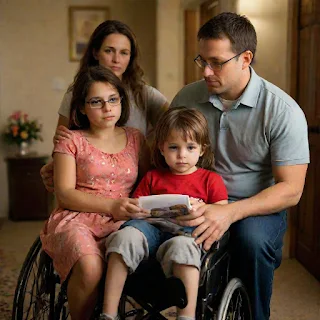Making Bangladesh More Inclusive for the Differently-Abled: Current Scenario and Initiatives
Creating an inclusive environment for everyone requires acknowledging diverse abilities and ensuring equal opportunities for growth and participation. According to the World Health Organization (WHO), approximately 15% of the global population lives with some form of disability, which translates to nearly 24 million people in Bangladesh alone.
Current Situation
Employment Rates and Equitable Compensation
Despite comprising roughly 15% of the population, the total differently-abled people employed represent less than 1%. Of those employed, merely 5% hold positions in the public sector, while approximately 20% find work in non-government organizations. Most rely on self-employment for income generation. Regrettably, pay disparities persist; workers with disabilities earn significantly less than their able-bodied counterparts performing similar tasks, particularly in manual labor fields. Addressing these inequities necessitates raising awareness among employers, advocating for anti-discrimination measures, and promoting accessible workplaces.
Accessible Educational Opportunities
Limited access to quality education impedes the advancement of differently-abled individuals. Enrollment figures indicate that only 41% of disabled students aged 6-10 years attend primary school, dropping to 24% among the 11-16 age bracket. Ideally, a 5:1 student-teacher ratio ensures optimal learning conditions for these pupils. Unfortunately, resource constraints contribute to suboptimal ratios, rendering effective instruction challenging. Late diagnoses exacerbate matters, reducing overall enrollment rates. Early intervention—identifying disabilities before age two—could potentially enhance inclusion and attainment levels.
Negative Attitudes and Societal Misconceptions
Ignorance surrounding disabilities contributes to discriminatory behavior and perpetuates societal misconceptions. Family members may view differently-abled loved ones as burdens or symbols of shame. Such biases hinder progress toward equitable treatment and full inclusion. Changing mindsets demands collective effort, starting with accurate information dissemination and encouraging open dialogue concerning ability diversity.
Government Commitments and Policies
Legislative Protections
Bangladesh adopted the Rights and Protection of Persons with Disabilities Act 2013, affirming its commitment to safeguarding the welfare of its differently-abled populace. Eleven distinct categories define disabilities, ranging from autism and cerebral palsy to multidimensional disabilities. While laudable, enforcement remains inconsistent, leaving numerous vulnerable individuals without recourse.
Proposed Budgets and Allocations
To address financial concerns, annual budget proposals allocate funding for various aspects catering to the differently-abled community. Provisions include identifying disability programs, expanding neurodevelopment protection trusts, supporting rehabilitation centers, enhancing foundation operations, and maintaining specialized educational institutes. Although promising, actual implementation frequently falls short, underscoring the necessity for stringent oversight and follow-through.
Commitment to Increase Allowance
With the objective of increasing the social security allowance to BDT 1,500 by 2020 and subsequently to BDT 3,000 by 2025, the government aimed to alleviate hardship experienced by differently-abled individuals. Alarmingly, recent allocations fall drastically below these benchmarks, currently capping at BDT 850. Furthermore, a substantial portion—approximately 22%—deducts from disability allowances to finance pension funds for select government employee groups. Given the pressing needs of recipients, redistributing these resources seems advisable.
Examples of Progress
Note: This section contains detailed explanations of exemplary initiatives. Feel free to trim down descriptions as needed for brevity.
Government Stipend Programme for Disabled Students
Initiated during the fiscal year 2007-08, the stipend program supports disabled students pursuing education. Beneficiaries rose from 12,209 students in 2007-08 to 100,000 students in 2022-23. Funding reached BDT 956.40 million taka in 2022-23, bringing cumulative benefits to approximately 868,680 students. Targeted expansion holds immense promise for future generations.
Addressing Hearing Disabilities
Responding to widespread hearing loss affecting 0.36% of the population, the government embarked upon ambitious projects, distributing over 2,700 cochlear devices to indigent children and adults since 2010. Additionally, a 2015 initiative offers complementary cochlear implant surgery to eligible candidates via collaborations with esteemed hospitals and organizations. Owing to limited scale, however, considerable opportunity exists for scaling interventions to meet growing demand.
Computer Training for Visually Impaired Individuals
Launched in 2010, the Centre for Services and Information on Disability (CSID) furnishes computer literacy courses tailored specifically for visually impaired persons. Utilizing screen reader technology and braille materials, participants acquire essential skills enabling subsequent job placement. With backing from Bangladesh Computer Council, this venture witnessed impressive outcomes, equipping over 60 trainees with requisite expertise needed for IT industry roles. Continued investment in adaptive technologies promises commensurate gains going forward.
State-Owned Factory Establishment
Founded in 2004, ‘Mukta,’ a state-owned enterprise operated by Sharirik Pratibandhi Surakkha Trust, empowers differently-abled persons through meaningful employment. Packaging purified drinking water into seven distinct bottle sizes generates revenue, financing stipends awarded to 128 underprivileged university students annually. Expansion possibilities remain abundant, considering untapped markets and potential product diversification strategies.
Recommendations for Future Action
-
Policy Implementation: Effective execution of extant regulations bolsters protections afforded to differently-abled citizens. Regular evaluation, accountability mechanisms, and transparent reporting facilitate ongoing improvement.
-
Public Engagement: Cultivating understanding and acceptance encourages supportive environments conducive to personal growth. Mass media campaigns, community events, and educational curricula foster appreciation for varied abilities, mitigating harmful stereotypes.
-
Resource Allocation: Prioritization of vital services warrants judicious utilization of available finances. Efficient deployment maximizes impact, targeting critical areas demanding immediate attention.
-
Collaborative Endeavors: Strategic partnerships leveraging shared goals amplify reach and effectiveness. Cross-sector cooperation mobilizes diverse strengths, propelling momentum towards common objectives.
Conclusion
While strides have undoubtedly occurred, much work lies ahead in achieving true inclusivity for Bangladesh’s differently-abled populace. United behind this noble pursuit, we envision a bright, prosperous future wherein everyone thrives irrespective of circumstance or condition. Together, let us champion equality, justice, and dignity for all.



Comments